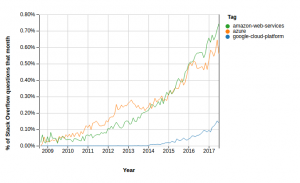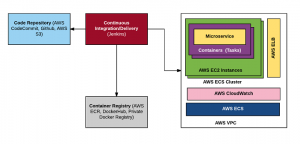Tag Archives: AWS
AWS Architects – Best Practices to build Efficient Systems

Here is a great resource (best practices and guidelines) which would help cloud architects (especially, AWS Solution architects) build the most secure, high-performing, resilient, and efficient infrastructure possible for their applications. That said, these cloud architecture whitepapers (pdf) would also prove helpful and useful for all kinds of cloud architects including Azure, Google Cloud, IBM, Oracle cloud etc. The following lists down the links for pages in related areas of interest: Operational excellence: Includes topics such as managing and automating changes, responding to events, and defining standards to successfully manage daily operations. Security: Includes aspects such as confidentiality and integrity of data, access-control, data audit etc Reliability: Includes topics such as recovery …
Top 8 Cloud Computing Platform Certifications

This article represents a list of top cloud computing platforms’ certifications which can be taken by professionals looking forward to demonstrate their expertise with one or more cloud computing platforms. Here are the cloud computing platforms for which certifications information have been provided later in this article: Azure AWS IBM Cloud Google Cloud Oracle Cloud Vmware VPC Alibaba Salesforce Microsoft Azure Certifications Microsoft Certified Solutions Associate (MCSA) There are two types of certifications under this category: MCSA: Cloud platform MCSA: Linux on Azure Microsoft Certified Solutions Expert (MCSE) This is a ceritification related to gathering expertise in cloud platform and infrastructure. Here is the page for MCSE: Cloud platform and …
Cloud Platform Trends (Oct 2017) – AWS Wins

This blog represents the cloud platform trends for the month of Octobar 2017 with primary focus on AWS, Azure and Google Cloud platforms. The clear winner is AWS. Indeed.com Job Postings Trends Following represents job posting trends on the popular portal, indeed.com: Google.com Search Trends The following represents Google search trends for cloud platforms: StackOverflow Q&A Trends The following represents Stackoverflow Q&A trends for cloud platforms:
MongoDB – Top 10 Best Practices for AWS Production Deployments
The following are some of the best practices which should be considered for your MongoDB production deployments on AWS. File system: MongoDB recommends using either of XFS or EXT4 filesystem for greater performance. With WiredTiger storage engine, it is strongly recommended to go with XFS file system. Refer this page, MongoDB production notes for finer details. AWS EBS (Elastic Block Store) Configuration EBS-optimized instances: It is advisable to use EBS optimized instances to host MongoDB database. With EBS optimized instances, there are separate network interfaces for database, and, other traffic (application traffic). In case, the replica set is configured with ephemeral storage, at least one of the secondaries in the …
Configure Bitbucket Webhook to Trigger Jenkins Builds on AWS EC2
This article represents steps required to configure BitBucket Webhook to trigger Jenkins Builds on AWS EC2 based on code committed in the repository. This essentially means that a code commit in the BitBucket code repository would trigger a build in Jenkins server running on AWS EC2 machine. This forms the starting point of continuous delivery pipeline. The jenkins build, when triggered as a result of code push, could perform tasks such as some of the following: Run the build, Run tests Publish build artifacts in artifactory Deploying the build artifacts in different environments including QA, UAT and production. Please feel free to comment/suggest if I missed to mention one or …
AWS – Steps to Achieve Continuous Delivery of Microservices Containers
This article enlists the key steps that would be required to create a continuous delivery setup for pushing cloud-native app (microservices with Docker containers) on AWS Cloud platform. Each of the points listed below will be detailed in separate blogs. Setup Jenkins with Git Setup Springboot microservices within Docker container Integrate Jenkins with AWS EC2 Container Registry (ECR) Setup AWS EC2 Container Service (ECS) Setup ECS Cluster with one EC2 instance Create ECS with a task definition and ELB (Elastic Load Balancer) Setup Setup a Web app using microservices Following apps/tools will be used to achieve above objective: Jenkins Git Springboot microservices Docker Containers AWS cloud services such as ECR, ECS, …
Microservices, Continuous Delivery & AWS Cloud – Part 1

This article represents details on how would the technology architecture look like when dealing with continuous delivery of microservices containers (Dockers) on AWS Cloud. Please feel free to comment/suggest if I missed to mention one or more important points. Also, sorry for the typos. Following are the key points which will be dealt with, in this and the following article (part 2): Technology architecture building blocks Technology architecture description Technology team and required skillsets In this article, we shall look into key technology architecture building blocks. In second part of the series, we shall look into steps needed to be configured to achieve the continuous delivery of microservices containers into AWS cloud …
I found it very helpful. However the differences are not too understandable for me